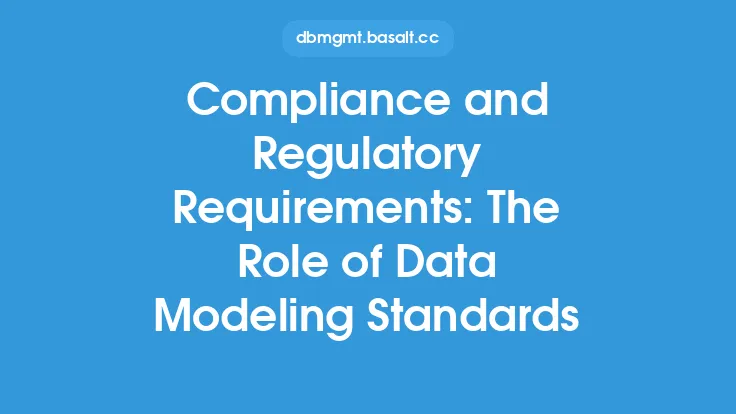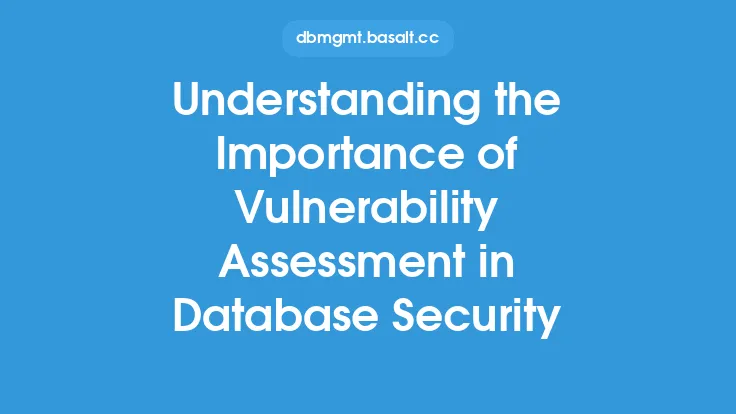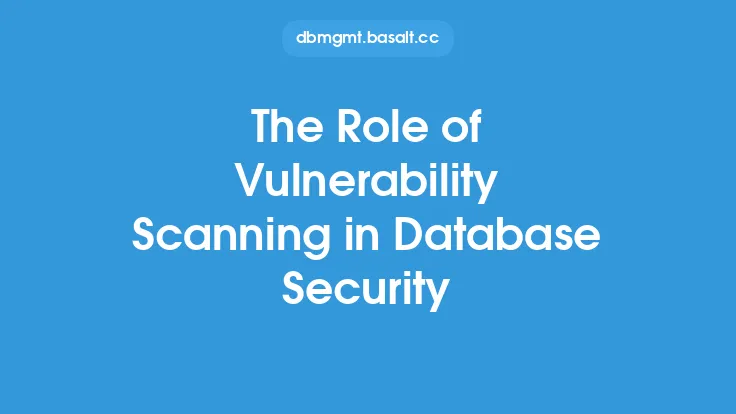Database security and compliance are critical components of any organization's overall information security strategy. As databases contain sensitive and confidential information, it is essential to ensure that they are protected from unauthorized access, use, disclosure, modification, or destruction. Two widely recognized standards that play a significant role in database security and compliance are SOC 2 (Service Organization Control 2) and ISO 27001 (International Organization for Standardization 27001). In this article, we will delve into the details of these two standards, their importance, and how they contribute to database security and compliance.
Introduction to SOC 2
SOC 2 is a set of standards developed by the American Institute of Certified Public Accountants (AICPA) that focuses on the security, availability, processing integrity, confidentiality, and privacy of an organization's systems and data. The SOC 2 framework is based on five trust services criteria: security, availability, processing integrity, confidentiality, and privacy. These criteria are designed to help organizations demonstrate their ability to manage and protect sensitive data, including database security. SOC 2 is particularly relevant to service organizations, such as cloud service providers, data centers, and managed security service providers, that store, process, or transmit sensitive data.
Introduction to ISO 27001
ISO 27001 is an international standard for information security management systems (ISMS) that provides a framework for organizations to manage and protect their sensitive information. The standard is based on a risk-based approach and provides a set of requirements for establishing, implementing, maintaining, and continually improving an ISMS. ISO 27001 is widely recognized and adopted globally, and it is considered a benchmark for information security best practices. The standard covers various aspects of information security, including database security, access control, cryptography, incident response, and business continuity management.
Key Components of SOC 2 and ISO 27001
Both SOC 2 and ISO 27001 have several key components that are essential for database security and compliance. Some of the key components include:
- Risk management: Both standards emphasize the importance of risk management in database security. Organizations must identify, assess, and mitigate risks to their databases and sensitive data.
- Access control: Access control is a critical component of database security, and both standards require organizations to implement controls to restrict access to authorized personnel.
- Data encryption: Data encryption is another essential component of database security, and both standards recommend the use of encryption to protect sensitive data.
- Incident response: Both standards require organizations to have an incident response plan in place to respond to security incidents, including database breaches.
- Continuous monitoring: Continuous monitoring is essential for database security, and both standards require organizations to continuously monitor their databases and systems for security threats and vulnerabilities.
Benefits of Implementing SOC 2 and ISO 27001
Implementing SOC 2 and ISO 27001 can bring numerous benefits to an organization, including:
- Improved database security: Both standards provide a framework for implementing robust database security controls, which can help protect sensitive data from unauthorized access, use, disclosure, modification, or destruction.
- Enhanced compliance: Implementing SOC 2 and ISO 27001 can help organizations demonstrate compliance with regulatory requirements and industry standards, which can reduce the risk of non-compliance and associated penalties.
- Increased customer trust: Organizations that implement SOC 2 and ISO 27001 can demonstrate their commitment to database security and compliance, which can increase customer trust and confidence.
- Competitive advantage: Implementing SOC 2 and ISO 27001 can provide a competitive advantage, as it demonstrates an organization's commitment to database security and compliance.
Challenges of Implementing SOC 2 and ISO 27001
Implementing SOC 2 and ISO 27001 can be challenging, and organizations may face several obstacles, including:
- Resource constraints: Implementing SOC 2 and ISO 27001 requires significant resources, including time, money, and personnel.
- Complexity: Both standards are complex and require a deep understanding of database security and compliance.
- Cultural change: Implementing SOC 2 and ISO 27001 may require cultural changes within an organization, including changes to policies, procedures, and employee behavior.
Best Practices for Implementing SOC 2 and ISO 27001
To overcome the challenges of implementing SOC 2 and ISO 27001, organizations should follow best practices, including:
- Conducting a gap analysis: Organizations should conduct a gap analysis to identify areas where they need to improve their database security and compliance controls.
- Developing a roadmap: Organizations should develop a roadmap for implementing SOC 2 and ISO 27001, including timelines, milestones, and resource allocation.
- Providing training: Organizations should provide training to employees on database security and compliance, including SOC 2 and ISO 27001 requirements.
- Continuously monitoring: Organizations should continuously monitor their databases and systems for security threats and vulnerabilities, and implement controls to mitigate risks.
Conclusion
In conclusion, SOC 2 and ISO 27001 are two widely recognized standards that play a significant role in database security and compliance. Implementing these standards can bring numerous benefits, including improved database security, enhanced compliance, increased customer trust, and a competitive advantage. However, implementing SOC 2 and ISO 27001 can be challenging, and organizations should follow best practices, including conducting a gap analysis, developing a roadmap, providing training, and continuously monitoring their databases and systems. By following these best practices, organizations can ensure the security and compliance of their databases and sensitive data, and demonstrate their commitment to information security and compliance.





